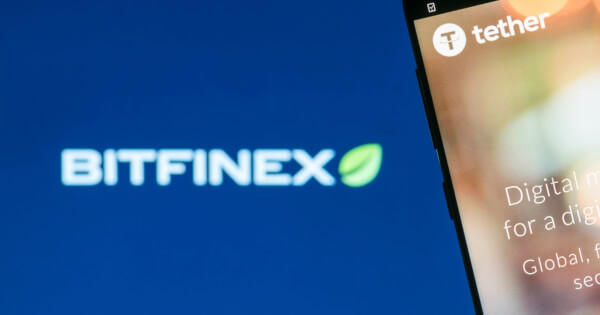According to blog.bitfinex.com, the emergence of a new type of decentralized and censorship-resistant Bitcoin (BTC) application on Nostr marks a significant advancement in the Bitcoin app space. These platforms leverage Nostr’s open and elastic protocol to seamlessly integrate with layer 2 solutions such as Bitcoin and Lightning Network to improve privacy, security, and user autonomy.
No rulers, no middlemen, no problems
A new wave of Bitcoin-centric decentralized applications (DApps) has emerged that leverages the Nostr decentralized social media protocol to bring censorship resistance and private services to the Bitcoin ecosystem. Platforms such as Mostro, Joinstr, Munstr, Smart Vaults, and Civkit are at the forefront of this movement. These platforms are tightly integrated with layer 2 solutions such as Bitcoin and Lightning Network, and more recently E-cash via Cashu and Fedi. It aims to improve privacy, security, and user autonomy in digital transactions by offering a variety of features ranging from peer-to-peer exchanges to sophisticated multi-signature storage.
Mostro exemplifies this new type of platform by offering a peer-to-peer Lightning exchange built on top of Nostr. It allows users to buy and sell Bitcoin with enhanced privacy using temporary keys and an escrow system that minimizes risk while ensuring transactions are secure and decentralized. The integration of Mostro and Nostr ensures the resilience and verifiability of communications, maintaining user anonymity and data integrity across the network.
Joinstr uses Nostr to provide a decentralized implementation of CoinJoin, enhancing Bitcoin transaction privacy without relying on a central arbiter. By facilitating CoinJoin transactions through Nostr, Joinstr ensures user privacy and simplifies the CoinJoin process. Simple implementation combined with better UI/UX and high-fidelity features make it accessible and attractive to a wide range of users. Integration with tools like the Electrum wallet further improves its usefulness.
Platforms like Munstr and Smart Vaults offer advanced multi-signature technology and securely manage your Bitcoin custody. Munstr uses Nostr for secure, encrypted communication in multi-signature transactions, and Smart Vaults leverages Nostr to coordinate signatures and collectively manage Bitcoin custody. These platforms aim to remove the friction that arises when collectively managing Bitcoin and provide powerful solutions for both individual users and institutional customers. Civkit, on the other hand, combines Nostr and Lightning Network to create a decentralized permissionless marketplace, promoting financial inclusion and reducing reliance on centralized intermediaries.
Does natural evolution always mean emergence?
The emergence of private and decentralized censorship-resistant applications built on top of Nostr and Bitcoin is perfectly aligned with the core principles of the cypherpunk movement. Cypherpunks advocate the use of encryption and privacy-enhancing technologies to create a world where individuals can communicate and transact freely without interference from central authorities. Bitcoin, a decentralized digital currency, already embodies many of these ideals by enabling peer-to-peer transactions without intermediaries. By building applications on Nostr, a protocol designed for censorship-resistant, decentralized social media, you can extend these principles to other areas of digital interaction, creating a more open and resilient online ecosystem.
From an ideological standpoint, cypherpunks have long envisioned a future where privacy and freedom are protected through the use of technology. The integration of Nostr with Bitcoin brings this vision to life by combining the financial sovereignty of Bitcoin with the telecommunications elasticity of Nostr. This synergy creates a platform that not only resists censorship but also protects user privacy, allowing individuals to engage in financial and social activities without fear of surveillance or restrictions. The development of these applications is a testament to Cypherpunk’s commitment to building systems that empower and protect individual rights in the digital age.
The technological advancements that have made these decentralized platforms possible are relatively recent, highlighting the importance of timing in realizing the cypherpunk vision. The maturity of the Bitcoin ecosystem through its security and widespread adoption provides a strong foundation for financial transactions. At the same time, the development of Nostr, a flexible and resilient protocol for decentralized communications, provides the infrastructure needed to build censorship-resistant applications. The emergence of these tools, along with advancements in cryptography and layer 2 solutions like the Lightning Network, have created the perfect storm of opportunity for innovators to realize the ideals of cypherpunk.
The practical implications of these new platforms are profound. It offers an alternative to the centralized and sometimes opaque systems of traditional finance. These applications foster a more democratic and equitable Internet by empowering users to control their data, communications, and financial transactions. These changes are not only consistent with cypherpunk ideology, but also address growing concerns about privacy, surveillance, and the monopolistic tendencies of major tech companies. As these decentralized platforms continue to evolve and gain traction, they represent an important step forward in realizing a more free and open digital world as envisioned by cypherpunk pioneers.
The first trickle of the coming flood of Nostr-based DApps?
The emergence of Bitcoin applications on the Nostr protocol may be just the beginning of a larger wave of DApps. Considering Nostr’s inherent resistance to censorship and Bitcoin’s security and financial autonomy, these early projects demonstrate the protocol’s potential to revolutionize the way decentralized platforms are built and operated. As the tools and infrastructure for Nostr development become more accessible and sophisticated, we are likely to see an influx of diverse and innovative DApps leveraging the strengths of the protocol. This could lead to a thriving ecosystem of decentralized, privacy-centric applications that challenge the dominance of centralized platforms and further promote the ideals of financial sovereignty and individual freedom within the digital environment.
Image source: Shutterstock

